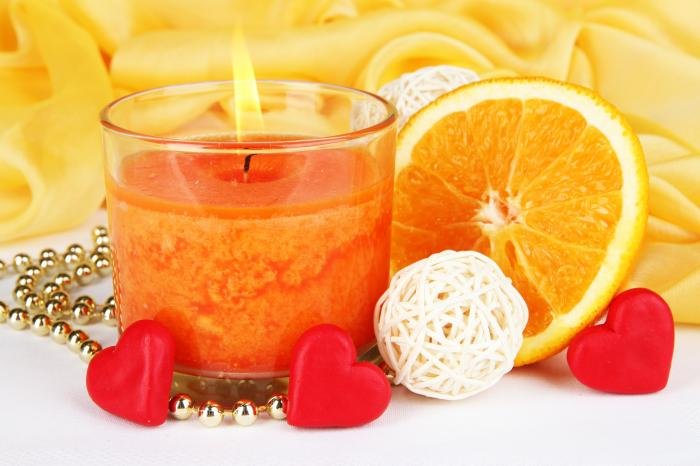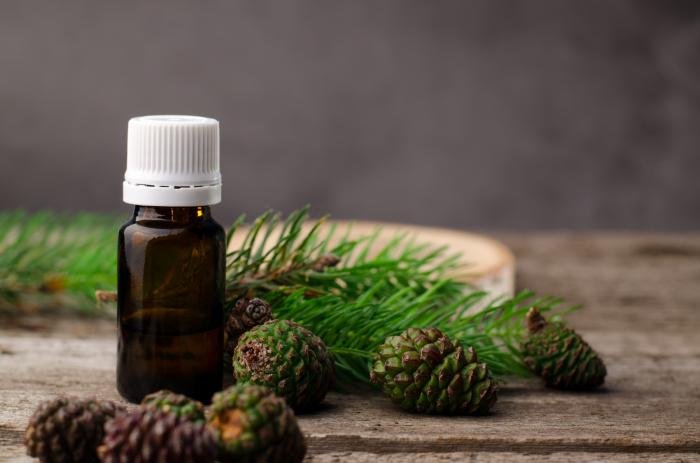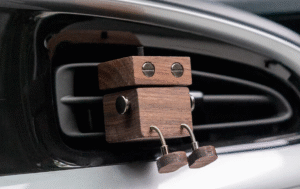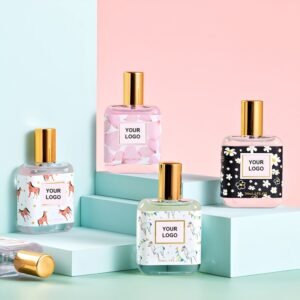Product teams waste months chasing fragrance trends that never convert into sales. The 2025 market demands precision—consumers now expect scents that align with their emotional states, seasonal rhythms, and regional identities.
Fragrance trends 2025 center on mood-driven formulations, gender-neutral compositions, and regional scent preferences that split distinctly between European and US markets. Woody-floral blends dominate Europe while citrus-gourmand combinations lead US demand. Successful product developers are abandoning traditional seasonal boundaries, creating year-round scent profiles that trigger specific emotional responses and drive higher conversion rates.
The fragrance industry is experiencing its most significant shift in decades, moving from aesthetic-focused scents to psychologically strategic formulations that influence purchase decisions at a neurological level.
Which Fragrance Notes Are Dominating Europe and the US in 2025?
Product teams struggle to predict which scent profiles will resonate across key markets. Without data-backed insights, launches risk missing consumer preferences and seasonal demand peaks.
In 2025, citrus, woody-floral blends, and gourmand notes lead fragrance preferences across Europe and the US. Consumers gravitate toward fresh bergamot and cardamom in warmer months, while cedarwood and vanilla dominate cooler seasons. Gender-neutral scents with musk and oud undertones are reshaping formulation strategies.

Regional Preferences Shape Inventory Decisions
European markets show stronger affinity for floral-woody combinations, particularly geranium paired with vetiver or sandalwood. US consumers lean toward citrus-forward compositions with bergamot oil and cardamom, especially in spring and summer collections. This geographic split requires distinct SKU planning. Loveeno’s custom fragrance development supports both regional variations and unified product lines, allowing brands to test market-specific formulations before full-scale production. Seasonal inventory becomes critical—citrus notes peak from March through August, while woody and gourmand profiles drive Q4 sales.
Emerging Notes Require Supply Chain Agility
Oud and musk are transitioning from niche to mainstream, with 43% annual growth projected through 2030 in gender-neutral formulations. These ingredients often face longer lead times and price volatility. The table below maps note categories to seasonal demand patterns:
| Fragrance Note Category | Peak Season | Cílové demografické údaje | Inventory Planning Window |
|---|---|---|---|
| Citrus (Bergamot, Cardamom) | March–August | 25–45, active lifestyle | 8–10 weeks pre-season |
| Woody-Floral (Cedarwood, Geranium) | September–February | 30–55, premium buyers | 10–12 weeks pre-season |
| Gourmand (Vanilla, Caramel) | October–December | 18–40, gift purchasers | 12–14 weeks pre-season |
| Musk & Oud Blends | Celoročně | 25–50, gender-neutral seekers | 14–16 weeks pre-season |
Amazon sellers should align PPC campaigns with these seasonal windows. Products featuring floral and woody keywords perform strongest in fall launches, while citrus tags drive summer conversions. Brands partnering with Loveeno gain access to pre-formulated bases that accelerate time-to-market for trend-responsive launches.
How Are Seasonal Scents Evolving Beyond Traditional Boundaries?
Traditional seasonal fragrance rules no longer dictate product success. Consumers now demand flexibility, blurring lines between spring florals and winter warmth.
Seasonal scents are evolving beyond traditional boundaries through year-round gourmand blends, gender-neutral formulations, and unexpected note combinations. The fragrance trends 2025 landscape shows consumers embracing milky lactonic notes in summer and citrus accords in winter, defying conventional seasonal categorization and creating new opportunities for product innovation.
The Collapse of Seasonal Silos
The rigid seasonal framework that once governed fragrance launches is fragmenting. Product developers now face consumers who wear woody ambers in July and fresh citrus in December. This shift creates both challenge and opportunity. Data from the global flavors and fragrances market shows a projected growth to $43.24 billion by 2030, driven largely by this demand for seasonless versatility. Neo-gourmand fragrances exemplify this evolution—traditionally reserved for fall and winter, these sophisticated vanilla-caramel-tonka blends now incorporate airy musks and green notes that work across seasons. For Amazon sellers and product teams, this means rethinking inventory cycles and seasonal marketing calendars.
Strategic Implications for Product Development
Modern scent notes defy categorization in ways that require new supply chain thinking. Milky lactonic accords, once considered niche, are trending as transitional notes that bridge seasons. Earthy musky florals combine traditionally opposed elements—grounding woods with ethereal petals—creating hybrid profiles that maintain relevance across quarters.
| Traditional Seasonal Model | Evolved Boundary-Breaking Approach |
|---|---|
| Spring: Light florals | Year-round: Floral-woody hybrids |
| Summer: Citrus-aquatic | Cross-seasonal: Gourmand-citrus fusions |
| Fall: Spicy-amber | Seasonless: Lactonic-amber blends |
| Winter: Heavy woods | Flexible: Sheer woody musks |
For product inspiration, Loveeno’s formulation capabilities allow brands to experiment with these cross-seasonal profiles while maintaining perceived value through innovative scent architecture. Trendy scents may require seasonal inventory planning, but the payoff lies in extended shelf life and broader market appeal beyond traditional three-month windows.
What Role Does Fragrance Mood Play in Consumer Purchase Decisions?
Most product teams underestimate how deeply scent influences buying behavior. Fragrance mood isn’t decorative—it drives emotional responses that directly impact cart conversion rates.
Fragrance mood shapes purchase decisions by triggering emotional associations, enhancing perceived product value, and creating memorable brand experiences. Data shows that 75% of emotions are generated by scent, making mood-aligned fragrances critical for converting browsers into buyers.

The Psychology Behind Scent-Driven Purchases
Scent marketing operates on a fundamental principle: our olfactory system connects directly to the brain’s limbic system, where emotions and memories reside. When consumers encounter a fragrance that aligns with their desired emotional state, purchase intent increases measurably. Research in consumer psychology reveals that mood-supportive scents create what behavioral economists call "emotional congruence"—when the product experience matches the buyer’s aspirational state.
For Amazon sellers and product developers, this translates into actionable strategy. A calming lavender-vanilla blend in sleep products doesn’t just smell pleasant; it validates the purchase decision by delivering the promised benefit before the product is even used. Loveeno’s fragrance development team leverages this principle by mapping scent notes to specific consumer moods, ensuring each formulation reinforces the product’s core promise.
Seasonal Fragrance Mood Patterns and Inventory Planning
Consumer scent preferences follow predictable seasonal rhythms that smart brands use to optimize inventory cycles. Understanding these patterns prevents both stockouts during peak demand and excess inventory of off-season formulations.
| Sezóna | Dominant Mood Preference | Top Scent Notes | Purchase Driver |
|---|---|---|---|
| Spring | Renewal & Energy | Citrus, green tea, fresh florals | Self-improvement, fresh starts |
| Léto | Joy & Freedom | Coconut, aquatic, tropical fruits | Lifestyle aspiration, vacation mindset |
| Podzim | Comfort & Nostalgia | Pumpkin spice, amber, vanilla | Emotional security, tradition |
| Zimní | Warmth & Luxury | Sandalwood, cinnamon, rich musks | Gift-giving, self-indulgence |
This seasonal calendar directly impacts supply chain decisions. Trendy mood-aligned scents require 8-12 week lead times for formulation adjustments, meaning product teams must track fragrance trends 2025 signals by Q1 to capture Q4 holiday demand. Working with manufacturers like Loveeno that maintain flexible production capabilities allows brands to adjust scent profiles mid-season based on emerging consumer sentiment data.
How Can Product Developers Translate These Trends Into Marketable Products?
Tracking fragrance trends is one thing. Converting them into profitable products that customers actually buy is another challenge entirely.
Product developers can translate fragrance trends 2025 into marketable products by aligning scent notes with consumer emotional preferences, seasonal demand patterns, and regional tastes. Build product lines around data-backed preferences like woody-spicy blends for Europe and fruity-floral compositions for the US market, while planning inventory cycles around peak seasonal windows.
Mapping Trends to Product Formulations
The most popular fragrance notes in Europe and US reveal distinct preferences that require tailored approaches. European consumers gravitate toward sophisticated woody and spicy combinations, while US markets show stronger demand for fruity and floral compositions with vanilla undertones. Product developers should create variant formulations that address these regional differences without fragmenting supply chains. Start with a core scent architecture, then modify top and middle notes to match local preferences. This approach reduces complexity while maximizing market reach.
Emotional positioning matters more than individual scent notes. Research shows consumers increasingly select fragrances based on desired emotional experiences—energizing morning scents versus calming evening options. Structure product inspiration around these mood-driven purchase triggers rather than purely aesthetic descriptions. A single base formula can yield multiple SKUs when marketed for different emotional contexts.
Seasonal Inventory Planning for Trending Scents
Trendy scents demand precise inventory forecasting to avoid stockouts during peak seasons or excess inventory during slow periods. The table below outlines optimal production and stocking strategies:
| Sezóna | Dominant Scent Notes | Production Lead Time | Stock-Up Window | Perceived Value Driver |
|---|---|---|---|---|
| Spring | Floral, Citrus, Green | 8-10 týdnů | January-February | Freshness, Renewal |
| Léto | Fruity, Aquatic, Light Musks | 8-10 týdnů | March-April | Energy, Freedom |
| Podzim | Woody, Spicy, Amber | 10-12 týdnů | June-July | Warmth, Sophistication |
| Zimní | Vanilla, Gourmand, Deep Woods | 10-12 týdnů | August-September | Comfort, Luxury |
Loveeno’s flexible manufacturing capabilities support rapid formulation adjustments without minimum order constraints, enabling product teams to test market response before committing to large inventory positions. This reduces financial risk when introducing trending scent profiles that haven’t yet proven long-term viability. Align your product calendar with these seasonal windows, and use pre-orders or limited releases to validate customer preference before scaling production.
Závěr
Fragrance trends 2025 demand strategic precision—product developers who align scent notes with regional preferences, seasonal demand patterns, and emotional triggers will dominate market share. The shift toward mood-driven formulations, gender-neutral compositions, and boundary-breaking seasonal scents creates immediate opportunities for brands willing to abandon traditional fragrance calendars. European markets require woody-floral sophistication while US consumers drive citrus-gourmand demand, making dual-formulation strategies essential for competitive positioning. Success hinges on translating these insights into actionable inventory decisions, with 8-14 week lead times separating reactive brands from market leaders. Partner with manufacturers like Loveeno who support flexible formulation testing and rapid production cycles—your Q4 revenue depends on decisions made today.
ČASTO KLADENÉ DOTAZY
Q1: What are the top fragrance trends for 2025?
The top fragrance trends for 2025 include nostalgia-driven scents that evoke cherished memories, neo-gourmands with unexpected edible notes like popcorn and roasted nuts, and savoury scents with distinctive profiles. Floral compositions are making a strong comeback with fresher interpretations, while oud blends with contrasting elements are gaining popularity. The fragrance mood for 2025 emphasizes storytelling and emotional connections through scent notes.
Q2: How can product developers use 2025 fragrance trends for inspiration?
Product developers can draw inspiration from 2025 fragrance trends by focusing on nostalgic scent notes that create emotional connections, experimenting with neo-gourmand combinations that blend edible elements with traditional florals, and developing savoury fragrance profiles for differentiation. Understanding the fragrance mood of each trend helps create products that resonate with consumer emotions and seasonal preferences, requiring strategic inventory planning for trendy scent launches.
Q3: What scent notes are trending in 2025 fragrances?
Key trending scent notes for 2025 include nostalgic violet notes, unexpected edible elements like popcorn and roasted nuts, reimagined floral compositions, and savoury profiles. Neo-gourmands are introducing unconventional combinations, while oud is being paired with contrasting elements like florals for modern twists. These scent notes create specific fragrance moods ranging from comforting nostalgia to sophisticated complexity.
Q4: How do fragrance trends impact inventory planning for Amazon sellers?
Fragrance trends significantly impact inventory planning as trendy scents often require seasonal adjustments and forward-looking procurement strategies. Amazon sellers need to anticipate demand for nostalgic and neo-gourmand fragrances, plan for limited-edition scent launches, and manage supply chain logistics for ingredients like specific floral notes or gourmand elements. Understanding the seasonal nature of fragrance moods helps optimize inventory levels and avoid stockouts during peak demand periods.
Q5: What are the emerging fragrance moods for 2025 product development?
Emerging fragrance moods for 2025 include nostalgic comfort through familiar scent notes, sophisticated complexity with neo-gourmand combinations, and emotional storytelling through scent experiences. The fragrance mood landscape emphasizes authenticity, personal connection, and multi-layered scent journeys that evolve throughout wear. Product developers should consider how these moods align with target consumer demographics and seasonal marketing strategies.




